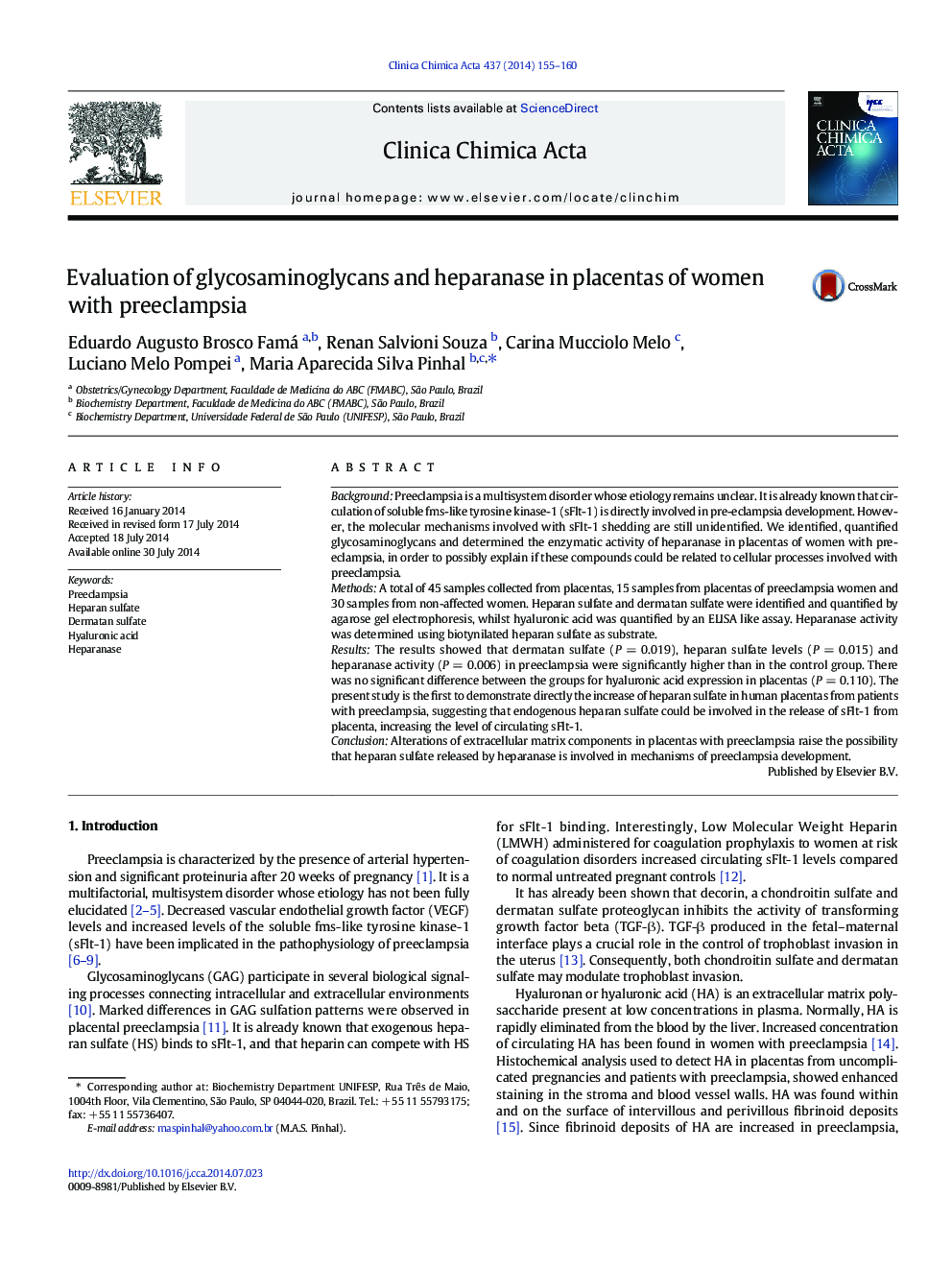| کد مقاله | کد نشریه | سال انتشار | مقاله انگلیسی | نسخه تمام متن |
|---|---|---|---|---|
| 1965391 | 1538661 | 2014 | 6 صفحه PDF | دانلود رایگان |
• It was collected 45 samples obtained from healthy and preeclampsia human placentas.
• This is a pioneer study that evaluated glycosaminoglycans profile in preeclampsia.
• Heparanase enzymatic activity was increased in the placentas with preeclampsia.
• Heparanase and glycosaminoglycans may be involved with preeclampsia development.
BackgroundPreeclampsia is a multisystem disorder whose etiology remains unclear. It is already known that circulation of soluble fms-like tyrosine kinase-1 (sFlt-1) is directly involved in pre-eclampsia development. However, the molecular mechanisms involved with sFlt-1 shedding are still unidentified. We identified, quantified glycosaminoglycans and determined the enzymatic activity of heparanase in placentas of women with preeclampsia, in order to possibly explain if these compounds could be related to cellular processes involved with preeclampsia.MethodsA total of 45 samples collected from placentas, 15 samples from placentas of preeclampsia women and 30 samples from non-affected women. Heparan sulfate and dermatan sulfate were identified and quantified by agarose gel electrophoresis, whilst hyaluronic acid was quantified by an ELISA like assay. Heparanase activity was determined using biotynilated heparan sulfate as substrate.ResultsThe results showed that dermatan sulfate (P = 0.019), heparan sulfate levels (P = 0.015) and heparanase activity (P = 0.006) in preeclampsia were significantly higher than in the control group. There was no significant difference between the groups for hyaluronic acid expression in placentas (P = 0.110). The present study is the first to demonstrate directly the increase of heparan sulfate in human placentas from patients with preeclampsia, suggesting that endogenous heparan sulfate could be involved in the release of sFlt-1 from placenta, increasing the level of circulating sFlt-1.ConclusionAlterations of extracellular matrix components in placentas with preeclampsia raise the possibility that heparan sulfate released by heparanase is involved in mechanisms of preeclampsia development.
Journal: Clinica Chimica Acta - Volume 437, 1 November 2014, Pages 155–160
